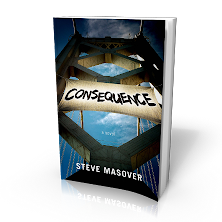That truism was evident in stark and intriguing form on Saturday afternoon at Alley Cat Books in San Francisco, where the bookstore was hosting a "Small Press Love Fest" on 24th and Harrison. From the store's announcement of the event:
Authors and editors from New York City and the SF Bay Area come together to celebrate unique voices and indie publishing. Presented by Ambush Review, Corium Magazine, great weather for MEDIA, and Red Bridge Press.The bookstore's revamped gallery space was full, standing-room-only full, and the poets and short story and flash fiction writers who took their turns at the podium had a wealth of witty, funny, haunting things to read.
As a professional geek I was especially intrigued by the 'found poetry' project from which Jordan Reynolds will publish in the Writing That Risks anthology forthcoming from Red Bridge Press later this year.
Starting with the poetry of Federico García Lorca as translated (or interpreted) by Berkeley Renaissance poet Jack Spicer, in After Lorca (1957), Reynolds speaks an English translation of a Spanish poem into his phone's Dragon mobile app for Android, which -- this is important, follow along please -- is configured to interpret spoken input as Spanish. Then, he copies the resultant text -- whatever Spanish the software thought it 'heard' in the English words read into it -- to Google Translate, which transforms the Spanish text back into English. Then he makes a poem from the Google Translate results.
That's an intricate sieve of process to sift a poem through. Let's break it down, with apologies to Jordan Reynolds if I am misrepresenting any particulars of his explanation:
- Already-translated Spanish text is spoken aloud, in English.
- The spoken words are interpreted by a software algorithm for turning spoken words into digitized text. But wait: the algorithm is deliberately sabotaged. Lied to, if it makes sense to call the use of software in a manner different than its makers intended 'lying.' ("Of course I'm speaking Spanish," one imagines Reynolds crooning to his Android ... in English.)
- The algorithmically-generated Spanish text is then presented to another algorithmically-driven software service for translation back to English.
- The poet arranges the results into a poem.
What I found intriguing about this process (which did, against all odds, result in something beautiful to hear Reynolds read) is the participation of software engineers in the creation of poetry. Not that they were asked or informed. They did not participate consciously. And, in fact, the poet (I'm speaking of Reynolds here, not Lorca or Spicer) had no angle, no theory about how the engineers' algorithms contribute to his work (I asked him, after the reading).
And that's the most intriguing part to me: that Reynolds accepts, as intrinsic elements of the digital substrate from which much 21st century culture grows -- with no particular interest in weighing them critically -- algorithms engineered over the course of, I don't know, twelve or fifteen years (as a system administrator I was installing Dragon Naturally Speaking for colleagues on the Berkeley campus sometime around the turn of the millenium ... so at least a dozen years).
Engineers, of course, make choices, as poets do. Those choices influence the workings of whatever they've built. Hence, to the way of thinking that struck me as I listened to Reynolds read at Alley Cat Books the other day, the participation of engineers as collaborators in the creation of his poems.
I don't suppose widely-available software is any different from the materials used to create other 'found' art: finding materials from which to make written, plastic, audio, visual, and/or video art has and always will be influenced by whomever lost the bits and pieces where an artist might find them, not to mention manufacturers of the materials themselves.
A child's discarded schoolwork. Old transit passes. A red wheel / barrow / glazed with rain / water. Not that one thinks of the artist's work as a collaboration with a school child, a commuter, or a chicken farmer. It's the artist's work, after all.
Intriguing, though, that certain software is so ubiquitous in these times that its origin and influence is as invisible as ... a transit pass. We see through a Google glass, darkly?
I can't end before mentioning the last author who read at the Small Press Love Fest: Jenny Bitner read half of her story "We ♥ Shapes," written in the voice of a mother whose child is a shapeshifter. This ... difference in her child gives the story's narrator oodles more than the usual mom has to worry about ... and I absolutely must find out how it ends, which means that Saturday's reading gave more than enough reason to find myself a copy of the Writing That Risks anthology; scuttlebutt is that it's due out from Red Bridge Press in May. I'll be waiting.
Related posts on One Finger Typing:
Should technology shape art?
Google Translate, AI, and Searle's Chinese Room
Google yanks APIs, developers caught with pants around ankles
Four eyes: 4 ways Google Glass might change the world
Thanks to snake eyes for his image of the Golden Gate Bridge; to Steve Rhodes for his 2009 image of John Kuzich's Fast Pass art at the de Young museum; and to William Carlos Williams for The Red Wheelbarrow.















